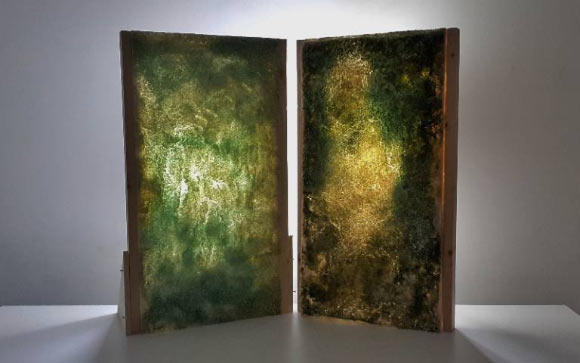C-ELM incorporates cyanobacteria into translucent panels that can be mounted on to the interior walls of buildings. As the microorganisms grow using photosynthesis they pull carbon dioxide out of the air and affix it to calcium to create calcium carbonate, locking away the carbon. A kilogram of C-ELM can capture and sequester up to 350 g of carbon dioxide. A 150-m2 (1615 sf) wall clad with these C-ELM panels will lock away approximately one ton of carbon dioxide.
 “My aim by developing the C-ELM material is to transform the act of constructing our future human habitats from the biggest carbon-emitting activity to the largest carbon-sequestering one,” said University College London postgraduate student Prantar Tamuli. “I was inspired to develop the material by studying stromatolites — natural stony structures formed over millions of years from sediments trapped by some of the Earth’s most ancient living organisms, algal mats.”
“My aim by developing the C-ELM material is to transform the act of constructing our future human habitats from the biggest carbon-emitting activity to the largest carbon-sequestering one,” said University College London postgraduate student Prantar Tamuli. “I was inspired to develop the material by studying stromatolites — natural stony structures formed over millions of years from sediments trapped by some of the Earth’s most ancient living organisms, algal mats.”
The calcium carbonate that the cyanobacteria produce helps to strengthen and reinforce the panels. The panels are lightweight, sound absorbing, translucent enough to transmit light and thermally insulating so as to enhance the energy efficiency of buildings.
The first such panels were publicly demonstrated at an installation inside the ‘Bioscope’ pavilion in St Andrews Botanic Garden in Scotland. Designed by the design collective Studio Biocene, the display showcased low-carbon and low-impact construction methods that mimic a natural environment.
“The promise of this kind of biomaterial is tremendous,” said University College London’s Professor Marcos Cruz. “If mass produced and widely adopted, it could dramatically reduce the carbon footprint of the construction industry. We hope that to scale up the manufacture of this C-ELM and further optimize its performance to be better suited for use in construction.”
You can read the original article at www.sci.news
